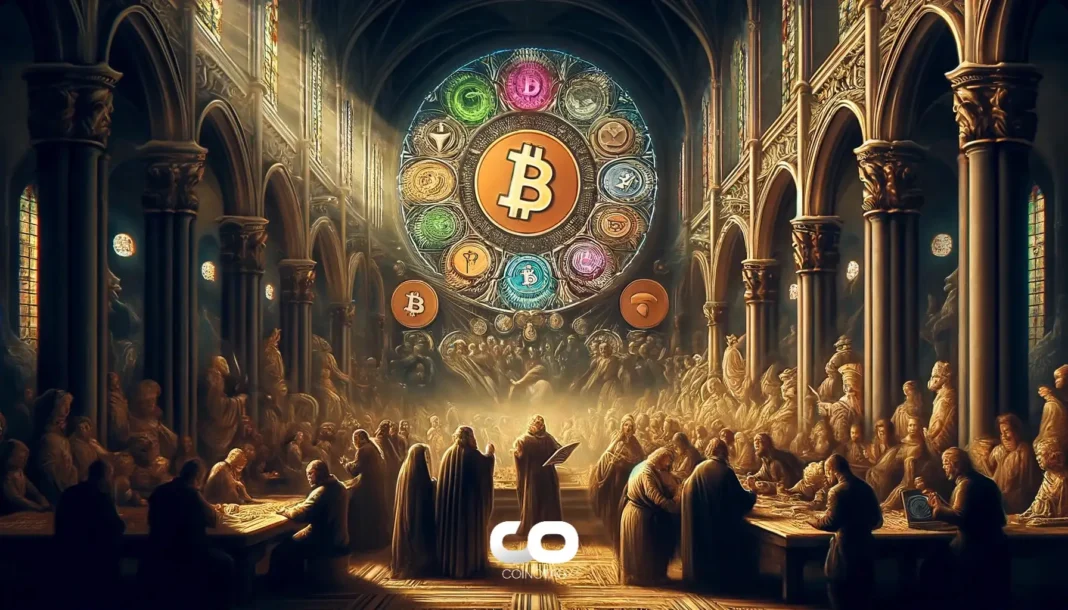| COINOTAG recommends • Exchange signup |
| 💹 Trade with pro tools |
| Fast execution, robust charts, clean risk controls. |
| 👉 Open account → |
| COINOTAG recommends • Exchange signup |
| 🚀 Smooth orders, clear control |
| Advanced order types and market depth in one view. |
| 👉 Create account → |
| COINOTAG recommends • Exchange signup |
| 📈 Clarity in volatile markets |
| Plan entries & exits, manage positions with discipline. |
| 👉 Sign up → |
| COINOTAG recommends • Exchange signup |
| ⚡ Speed, depth, reliability |
| Execute confidently when timing matters. |
| 👉 Open account → |
| COINOTAG recommends • Exchange signup |
| 🧭 A focused workflow for traders |
| Alerts, watchlists, and a repeatable process. |
| 👉 Get started → |
| COINOTAG recommends • Exchange signup |
| ✅ Data‑driven decisions |
| Focus on process—not noise. |
| 👉 Sign up → |
-
In February, U.S. inflation showed signs of moderation, potentially impacting cryptocurrency valuations, particularly Bitcoin.
-
The Consumer Price Index (CPI) data released by the Bureau of Labor Statistics indicates that inflation is still above the Federal Reserve’s target, creating a cautious market environment for digital assets.
-
According to CoinGecko, Bitcoin’s price surged to $84,000 following the CPI report, reflecting a broader positive sentiment in the cryptocurrency market.
This article breaks down February’s inflation trends and their implications for the cryptocurrency market, focusing on Bitcoin’s significant price movements.
Inflation Trends and Their Effects on Cryptocurrency Prices
The recent Consumer Price Index (CPI) data revealed a 2.8% increase in consumer prices year-over-year, slightly lower than the anticipated 2.9%. This lower-than-expected figure has had a ripple effect across financial markets, creating new opportunities for cryptocurrencies. A notable observation is that the core inflation rate, excluding food and energy, fell to 3.1%, down from January’s 3.3%. This development has offered some relief to investors, as it suggests a potential easing of inflationary pressures.
Market Response: Bitcoin and Other Cryptocurrencies
In response to the CPI report, Bitcoin experienced a notable increase, reaching $84,000 shortly after the announcement—a rise of approximately 1% within 10 minutes according to crypto data provider CoinGecko. This momentum was not isolated to Bitcoin; other prominent cryptocurrencies such as Ethereum and Solana also recorded gains, rising to $1,900 and $127 respectively. Such reactions illustrate the degree to which traditional market dynamics can influence the digital asset sector.
Federal Reserve’s Influence on Market Sentiment
The Federal Reserve continues to play a crucial role in shaping market perceptions and trends. Fed Chair Jerome Powell stated that the ongoing uncertainty surrounding inflation and economic policies complicates their monetary strategies. With interest rates expected to remain steady in the upcoming policy meeting, market participants are closely monitoring potential shifts in the Fed’s approach to interest rates and their impact on asset classes, including cryptocurrencies.
| COINOTAG recommends • Professional traders group |
| 💎 Join a professional trading community |
| Work with senior traders, research‑backed setups, and risk‑first frameworks. |
| 👉 Join the group → |
| COINOTAG recommends • Professional traders group |
| 📊 Transparent performance, real process |
| Spot strategies with documented months of triple‑digit runs during strong trends; futures plans use defined R:R and sizing. |
| 👉 Get access → |
| COINOTAG recommends • Professional traders group |
| 🧭 Research → Plan → Execute |
| Daily levels, watchlists, and post‑trade reviews to build consistency. |
| 👉 Join now → |
| COINOTAG recommends • Professional traders group |
| 🛡️ Risk comes first |
| Sizing methods, invalidation rules, and R‑multiples baked into every plan. |
| 👉 Start today → |
| COINOTAG recommends • Professional traders group |
| 🧠 Learn the “why” behind each trade |
| Live breakdowns, playbooks, and framework‑first education. |
| 👉 Join the group → |
| COINOTAG recommends • Professional traders group |
| 🚀 Insider • APEX • INNER CIRCLE |
| Choose the depth you need—tools, coaching, and member rooms. |
| 👉 Explore tiers → |
Traders’ Expectations for Interest Rates
Traders anticipations have evolved rapidly, with futures now indicating three potential rate cuts by the end of the year, a marked shift from earlier expectations that included only one cut. This forecast reflects a growing belief that the Fed may shift towards a more dovish stance in response to improving inflation data, which could further bolster cryptocurrency investments.
Conclusion
In summary, the latest inflation data presents a complex picture for both traditional and digital assets. With signs of cooling inflation and promising forecasts from the Federal Reserve, cryptocurrencies—including Bitcoin—are likely to experience increased interest and investment activity. The evolving landscape calls for close monitoring as both inflationary trends and Fed policies will significantly impact market dynamics moving forward.
| COINOTAG recommends • Exchange signup |
| 📈 Clear interface, precise orders |
| Sharp entries & exits with actionable alerts. |
| 👉 Create free account → |
| COINOTAG recommends • Exchange signup |
| 🧠 Smarter tools. Better decisions. |
| Depth analytics and risk features in one view. |
| 👉 Sign up → |
| COINOTAG recommends • Exchange signup |
| 🎯 Take control of entries & exits |
| Set alerts, define stops, execute consistently. |
| 👉 Open account → |
| COINOTAG recommends • Exchange signup |
| 🛠️ From idea to execution |
| Turn setups into plans with practical order types. |
| 👉 Join now → |
| COINOTAG recommends • Exchange signup |
| 📋 Trade your plan |
| Watchlists and routing that support focus. |
| 👉 Get started → |
| COINOTAG recommends • Exchange signup |
| 📊 Precision without the noise |
| Data‑first workflows for active traders. |
| 👉 Sign up → |
| COINOTAG recommends • Members‑only research |
| 📌 Curated setups, clearly explained |
| Entry, invalidation, targets, and R:R defined before execution. |
| 👉 Get access → |
| COINOTAG recommends • Members‑only research |
| 🧠 Data‑led decision making |
| Technical + flow + context synthesized into actionable plans. |
| 👉 Join now → |
| COINOTAG recommends • Members‑only research |
| 🧱 Consistency over hype |
| Repeatable rules, realistic expectations, and a calmer mindset. |
| 👉 Get access → |
| COINOTAG recommends • Members‑only research |
| 🕒 Patience is an edge |
| Wait for confirmation and manage risk with checklists. |
| 👉 Join now → |
| COINOTAG recommends • Members‑only research |
| 💼 Professional mentorship |
| Guidance from seasoned traders and structured feedback loops. |
| 👉 Get access → |
| COINOTAG recommends • Members‑only research |
| 🧮 Track • Review • Improve |
| Documented PnL tracking and post‑mortems to accelerate learning. |
| 👉 Join now → |







